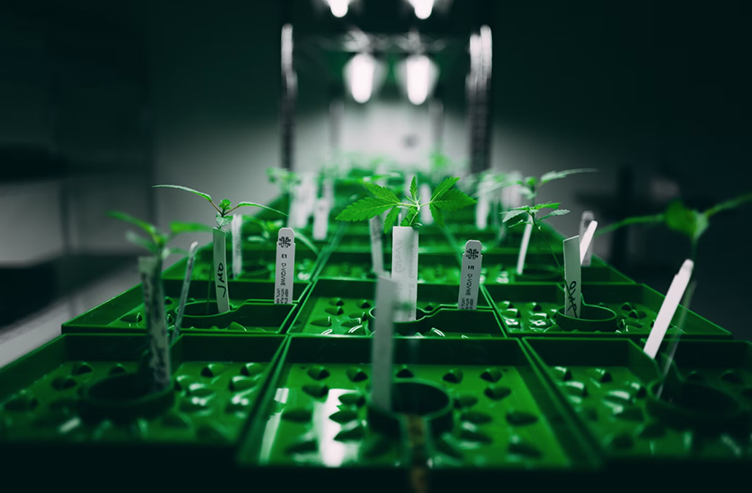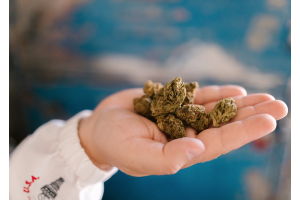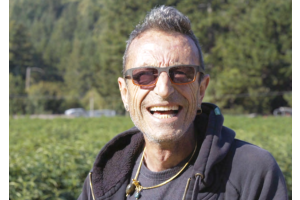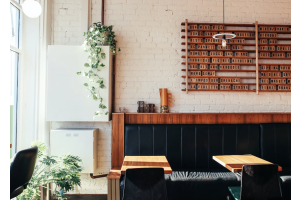Pretty Little Pot, By Psy-23

When it comes to cannabis many people will tell you that the best way to ensure that you get a good quality bud for your buck is to grow your own.
There's such a vast selection of quality strains out there (and plenty of reputable seed banks) that it's now easier than ever to get your hands on some of the best varieties in the world, so why is it that many people still choose to rely on others when it comes to sourcing their smoke?For many of us, myself included, there a few key factors that might put people off the idea of setting up their own grow.
For one there's the issue of the initial cost of getting a tent, lights, fans, nutrients etc., not to mention having space that is well-suited and inconspicuous enough to avoid detection. Add to this the steep learning curve and possibility of lost plants along the way, the need to actually wait for the results to come to fruition and the pitfalls of persecution (if you are growing in a place where it is still not legal to do so), and it's hardly surprising that a good proportion of people might be put off the idea.
I've had a decent size tent and some lights sitting in my garage for the past few years (storage for a friend), but the realities of a family home and the proximity of my neighbors has always made me think twice about testing out my 'green fingers' and, ultimately, the whole setup has remained sealed in its box.
More than anything, the lack of a suitable space is probably the key limiting factor.Recently, I stumbled across a growing number of people online who have taken the idea of cultivation, dismissed the general approach and instead focused their efforts into making their plant into a living work of art.
Taking inspiration from the ancient art of tending for miniature trees, a renaissance of cannabis cultivation has been growing in popularity and sweeping across the globe in the form of 'Bonsai Cannabis'.The name 'bonsai' roughly translates into English as meaning 'planted in a container', but the diminutive plants owe their reduced size to the fact that the planting containers are purposely very small.
While the 'normal' process of growing from seed would see a grower transplant the young plants into much larger capacity pots as they develop, this step is removed to restrict the growth levels and overall size of the maturing plant. Smaller pot sizes restrict root growth and spreading, which in turn limits the plants natural growth rate.
When growing a bonsai plant of any description, the ultimate goal is to ensure that the plant is well maintained so that it can develop into a healthy and strong mature form regardless of its diminished stature.As you would expect from the name, Bonsai Cannabis takes the idea of caring for your plant and amplifies it into an art form.
Through careful and considerate cultivation, this approach allows you to bask in the glory of the plant in a perfectly manicured form. For many people who decide to take this approach to growing it is not only about the challenge and satisfaction that comes from seeing the results, it is also an excellent way to keep a strain going for longer in order to take cuttings for clones. It's no secret that consistency of a strain is not always totally dependable, so having a proven strain/seed that can be used over and over is certainly a huge plus.
For others, a bonsai cannabis plant can really add to a room and provide an interesting talking point for your guests to pour over (let's be honest, it's much better than letting people in and out of your grow room every time they want to see how your plants are coming along!).
So, how do you go about trying it for yourself? I'm not pretending to be an expert on the subject, but here's some advice I've gathered from around the way. It all starts with getting hold of a nice little pot. You may want to consider how involved you want to be as things progress here, as many people advise using twine to guide and train the plant to grow into a particular shape. If you want to maximize your level of control as you progress it is worth putting some holes around the rim of the pot before you put the soil in as this will give you more options for training later on.
Once you've got your pot and picked a suitable soil mix to fill it with, the hardest part is choosing what you're going to plant in it. If you happen to know a grower with some good quality plants then you may be able to get a cutting to use; if you've got some larger plants on the go then you can pick from your own stable (a great way to ensure quality if you know its lineage and how well it performs); if you want to start from scratch then you'll need to pop a couple of seeds in a moist bed for a few days before transferring the seedling across. Whatever you choose, it is important that you place a small stake alongside it to give you the opportunity to guide and shape the main trunk as it begins to develop.
Once the plant starts to increase in size and health, you can use string or twine to tie down and shape the direction of any branches that start to form - there are subtle choices here that make a key difference as you can force the branches to grow horizontally by tying them down tightly or allow them more vertical growth by keeping the ties more loose.
Whichever you prefer, keep a close eye on the developing branches to ensure that they have enough flexibility to grow without being strained, overly-bent or snapped. As time progresses, you need to prune the spreading branches in order to maintain the desired shape and overall appearance.
This isn't purely cosmetic, as the aim here is to keep a good level of airflow reaching the main stem, but remember that you can only prune back the offshoot branches unless you want to risk significant damage to the plant.The best thing about a bonsai cannabis plant is that you can keep it alive for a number of years by never pushing it out of the vegetative state (no need for a change in light cycles).
Aside from the pleasure of working in harmony with such a natural beauty, you can take cuttings at your leisure in order to grow sister trees or replant them in bigger pots if you want to work towards a full-blown crop.
As mentioned before, consistency is a godsend when it comes to cultivating a quality supply of buds with the required characteristics so this pretty little plant ticks all the right boxes.Some people out there have truly mastered this craft and the results can be a sight to behold - just don't expect to get it right first time and, like Mr. Miyagi always said, patience is key.












Validate your login